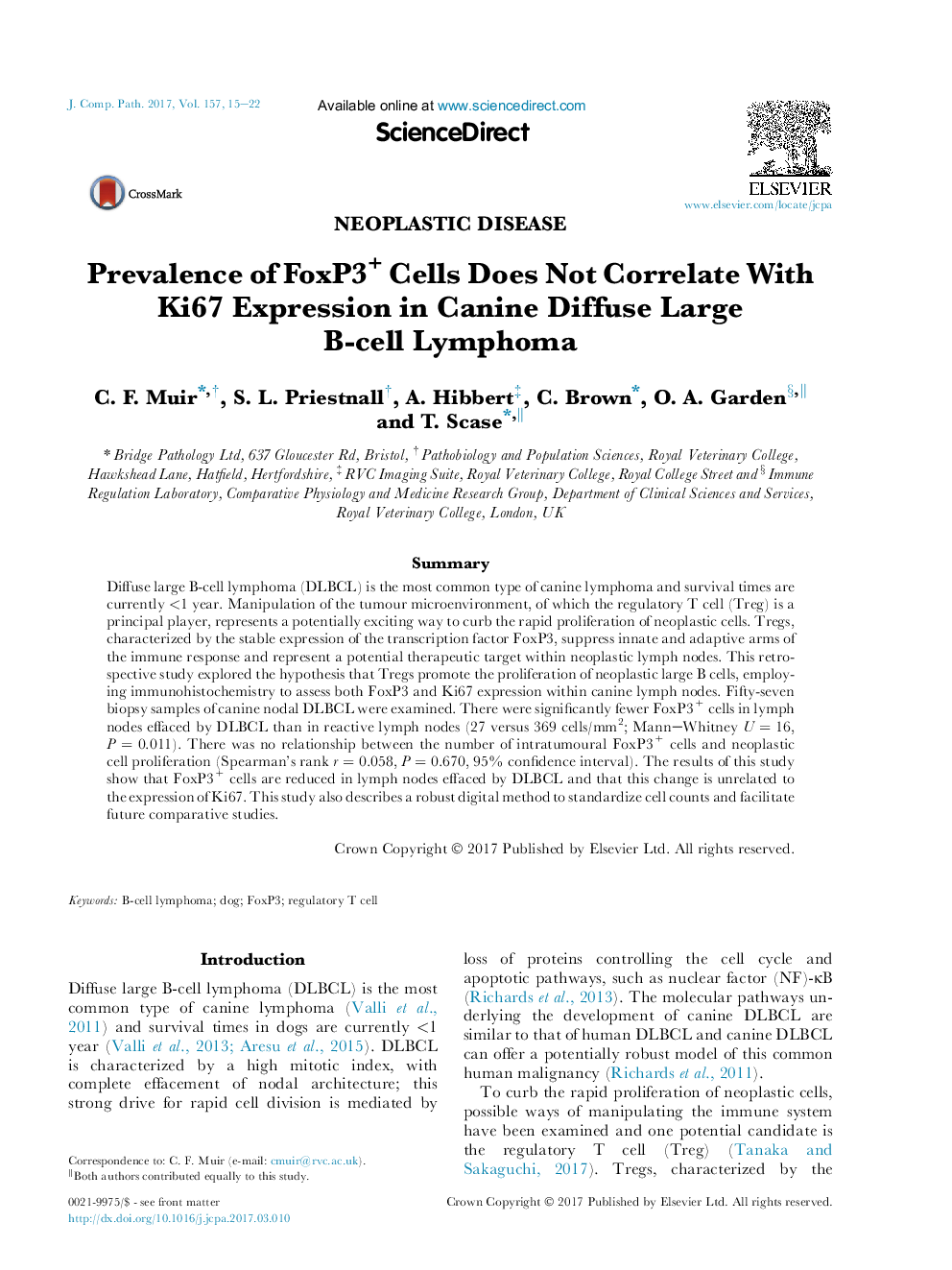| Article ID | Journal | Published Year | Pages | File Type |
|---|---|---|---|---|
| 5541471 | Journal of Comparative Pathology | 2017 | 8 Pages |
Abstract
Diffuse large B-cell lymphoma (DLBCL) is the most common type of canine lymphoma and survival times are currently <1 year. Manipulation of the tumour microenvironment, of which the regulatory T cell (Treg) is a principal player, represents a potentially exciting way to curb the rapid proliferation of neoplastic cells. Tregs, characterized by the stable expression of the transcription factor FoxP3, suppress innate and adaptive arms of the immune response and represent a potential therapeutic target within neoplastic lymph nodes. This retrospective study explored the hypothesis that Tregs promote the proliferation of neoplastic large B cells, employing immunohistochemistry to assess both FoxP3 and Ki67 expression within canine lymph nodes. Fifty-seven biopsy samples of canine nodal DLBCL were examined. There were significantly fewer FoxP3+ cells in lymph nodes effaced by DLBCL than in reactive lymph nodes (27 versus 369 cells/mm2; Mann-Whitney U = 16, P = 0.011). There was no relationship between the number of intratumoural FoxP3+ cells and neoplastic cell proliferation (Spearman's rank r = 0.058, P = 0.670, 95% confidence interval). The results of this study show that FoxP3+ cells are reduced in lymph nodes effaced by DLBCL and that this change is unrelated to the expression of Ki67. This study also describes a robust digital method to standardize cell counts and facilitate future comparative studies.
Related Topics
Life Sciences
Agricultural and Biological Sciences
Animal Science and Zoology
Authors
C.F. Muir, S.L. Priestnall, A. Hibbert, C. Brown, O.A. Garden, T. Scase,
